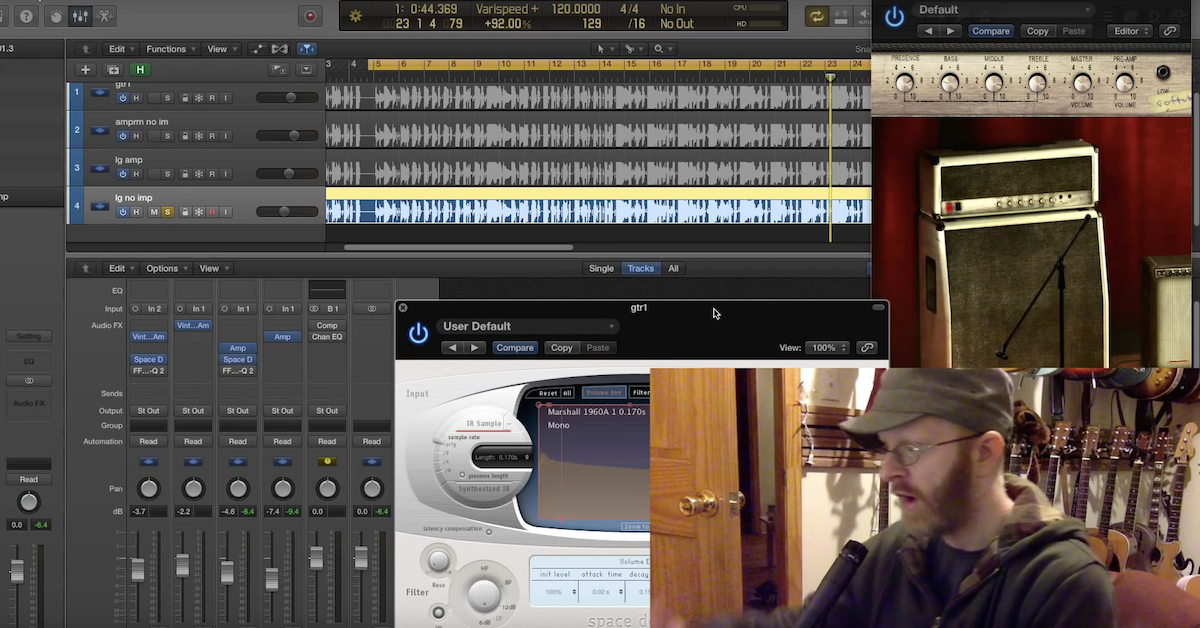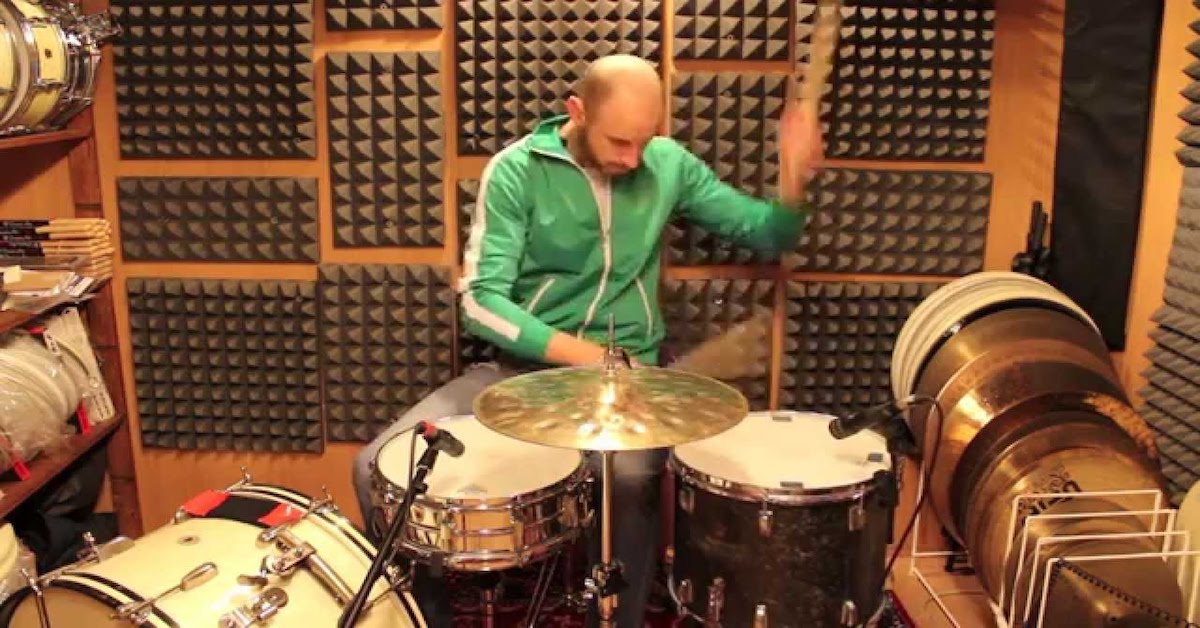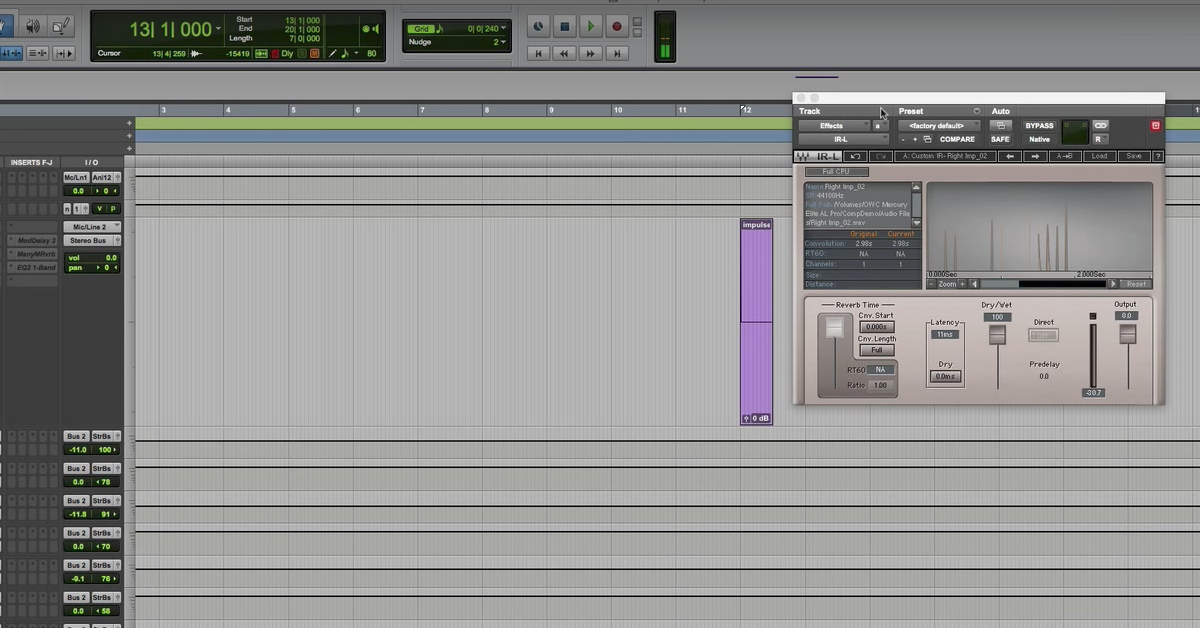How to Simulate Guitar Cabinets with Impulse Responses
In this video, I’ll be talking about how a guitar speaker cabinet can be simulated using software. This modeling can be done in several different ways.
One very simple way is to treat the speaker cabinet as a spectral processor modeled by an EQ curve. In this case, a simple equalizer rolls off some of the lows, rolls off some of the highs, and boosts some of the mid-range.
A more complex and accurate way is to model the cabinet using something called an “impulse response.”
Using an impulse response will result in a much more realistic sound to the cabinet. Some companies have taken the idea of an impulse response a step further by modeling not only the cabinet and the microphone, but also the signal that goes through the microphone into a console, and the console is set up to tailor and tweak the sound of the cabinet and microphone pair.
This extra pre-processing means that these impulses can be dropped into your session. They’re ready to go, you don’t have to do any extra work to get it to sound great.
I’ll be showing you a side by side comparison of these different types of modeling techniques by playing you audio examples, and you can compare and contrast and judge for yourself.
First up, I have a clean rhythm guitar part played on a Strat. I’ll be using Amplitube as my basic amp sim software in this case. I’ll start out by showing you the stock guitar cabinet that comes with Amplitube, but then on a separate track, I’ve got the same exact preamp with Amplitube, but I’ve bypassed the stock cabinet. Then I’m feeding that signal into Recabinet over here. This is a software that can be used to convolve an impulse response.
I’ll start out by showing you the stock impulse responses that come with Recabinet. These have no extra pre-processing. They’re a very raw sound.
Then, I’ve also got setup another track over here, where I’m using impulse responses that come from the Rosen digital studio guitar impulse library. These impulses have been pre-processed, so they’re ready to go and sound great without any extra work.
Let me show you these examples side by side.
First up is the Strat going through the stock cabinet.
[guitar plays through Amplitube stock impulse]
Here’s the stock Recabinet impulse
[guitar through Recabinet impulses]
And the Rosen digital impulse
[guitar plays through Rosen digital impulses]
Next up is a bluesy, overdriven Telecaster part.
Here, for the amp sim software, I’m going to be using Guitar Rig. I’ve set up here a Plexi amp so that it has a little more overdrive. Then I’m going to feed that into a couple different ones that you can hear – the stock cabinets, ones the matched cabinet that comes with Guitar Rig, the other is the Control Room pro, and I can fade back and forth between these here.
Then, I’m doing the same thing as before where I’ve got the Guitar Rig here for just the amplifier part, and that’s going to feed into the stock Recabinet here with the stock 1960 Marshall amplifier.
Then I’ve got the Rosen digital. Their pre-processed impulse responses are here. I’ve picked out one I like here with the same Marshall 1960 so you can hear the sound side by side again with the Telecaster.
[guitar, alternating impulse responses]
Last up is a heavy guitar part played on a Les Paul. Here, I’m going to be using Amplitube again. I’ve got an Engl amp going into a Mesa Boogie cabinet.
Then I’m doing the same thing here where I’ve bypassed the cabinet for the amplifier, and I’m feeding Recabinet a version of a Mesa Boogie.
Lastly, I’ve got the Rosen digital. Their impulse response is here for their Mesa Rectifier, so you can hear these side by side.
[guitar plays, alternating impulse responses]
Hopefully you were able to hear that each one of these cabinets sounds different. In fact, the cabinet contributes significantly to the sound of the simulated guitar amp.
If you’re looking for fast results that sound amazing, definitely check out the Rosen digital studio guitar impulses. I just picked it up, and I was blown away by the results compared to the other cabinet modeling. I hear some really nice fullness, clarity, and definition to the cabinets that they captured. So definitely check those out.
Take care, guys.





